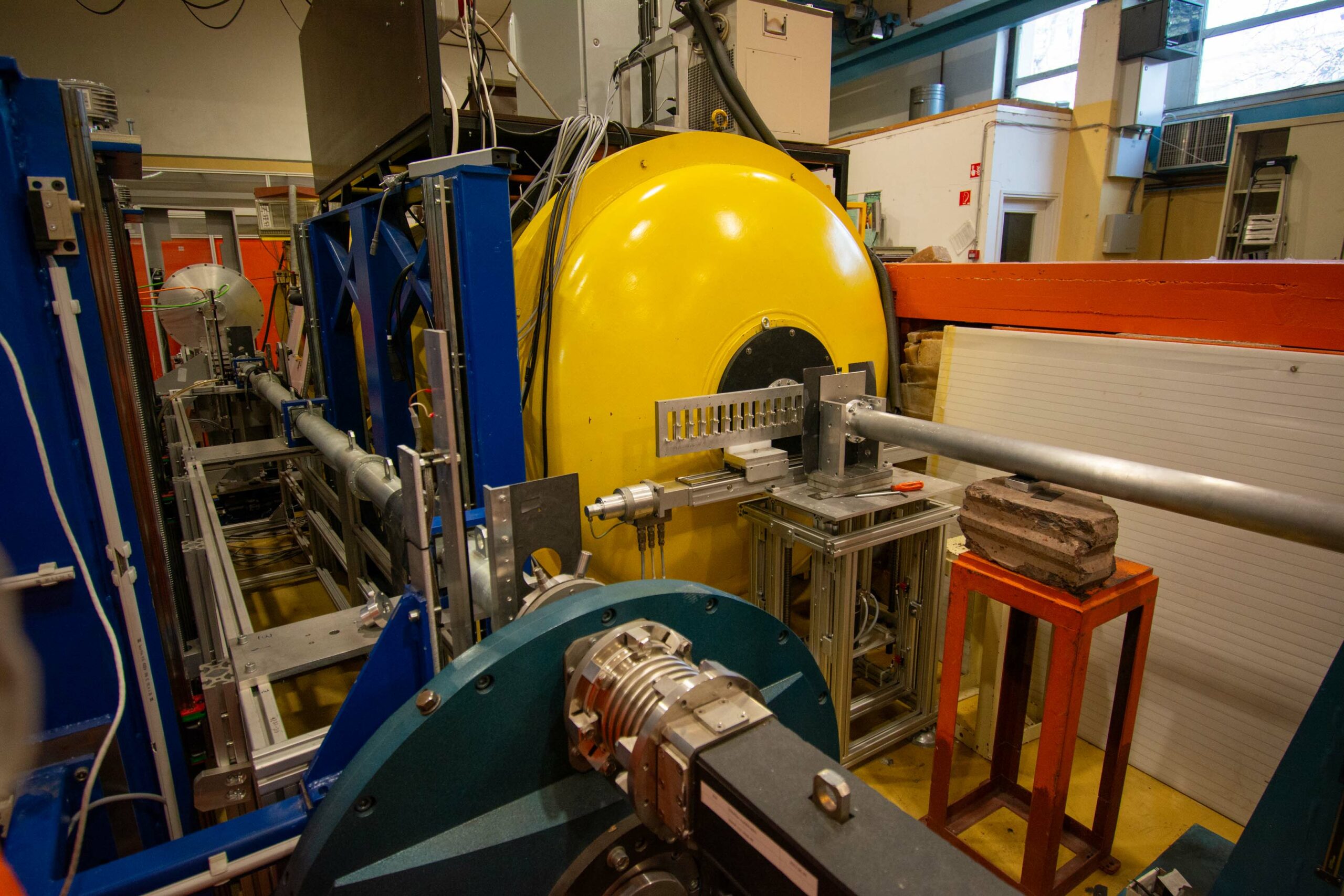- Name: Yellow Submarine SANS instrument
- Technique: small angle neutron scattering
- Range of investigated features:
structure in the size range 0.5 – 200 nm - Penetration depth: 5 mm
- Typical size of sample: 2 – 20 mm
- Measurable materials: solid and liquid samples
- Contact: sans@bnc.hu

The SANS diffractometer Yellow Submarine is used for structural characterization of a wide range of samples and materials, exhibiting structural features at the length scales larger than the interatomic distances, such as porosity, defects and precipitates in soft or hard materials, liquid solutions of polymers, surfactants and colloids, proteins and biological membranes alike. The instrument is installed on the neutron guide looking at the cold neutron source, providing “cold” neutrons that are optimal for resolution of structural features at suprananometer length scales.
Sample environment
In most experiments a horizontal moving stage is used with sample changers installed on top of it. Sample changers for solid or liquid samples with 6 or 14 sample positions are available for temperature-controlled measurements. An external water circulation bath is used to keep temperatures between 10 °C and 90 °C. For measurements at ambient temperature also a 10-position sample changer can be used.
An electromagnet providing magnetic field up to 1.6 T at a pole distance of 25 mm can also be mounted on the sample table, with a vertical automatic sample changer for 9 sample positions.
Detector
The scattered neutrons are detected by a two-dimensional position sensitive gas detector with 64 x 64 pixels (1 cm x 1 cm pixel size). The detector was produced by LETI (Grenoble, France) in the nineties. The working gas is BF3. The detector is placed in an evacuated vessel and moves on rails. The sample-to-detector distance can be changed between 1 and 5.6 meters.
Velocity selector
The neutron beam is monochromatized by a multidisc velocity selector. The rotation speed can be varied between 1500 and 7000 rot/min, corresponding to neutron wavelengths between 3 and 16 Å. The width Δλ/λ of the transmitted wavelength distribution is usually set to 20% FWHM, and for particular cases can be varied between 12% and 30% by changing the tilt angle between the selector axis and the direction of the neutron beam.
Main characteristics of SANS instrument Yellow Submarine
| Beam guide | Cold neutron guide No. 10 /2 |
| Monochromator: | Multidisk velocity selector |
| Detector: | 2D position sensitive matrix 64×64 cm2, filled with BF3 gas |
| Collimation: | 5 m |
| Flux at the guide exit: | 5 x 107 n/cm2/sec |
| Sample-to-detector distance: | Continuously adjustable between 1 m and 5.5 m |
| Incident wavelength: | 3 – 16 Å |
| Wavelength spread: | Adjustable between 12 – 30 % |